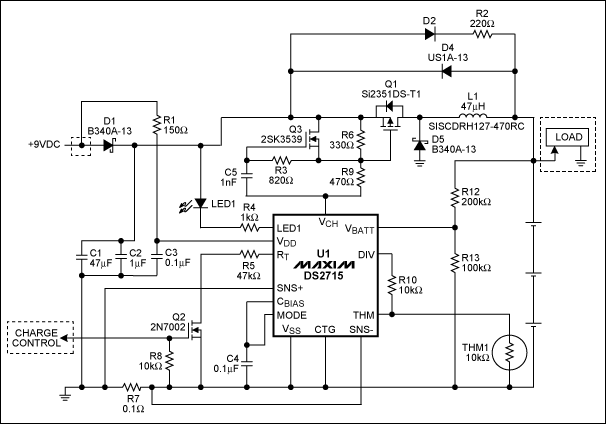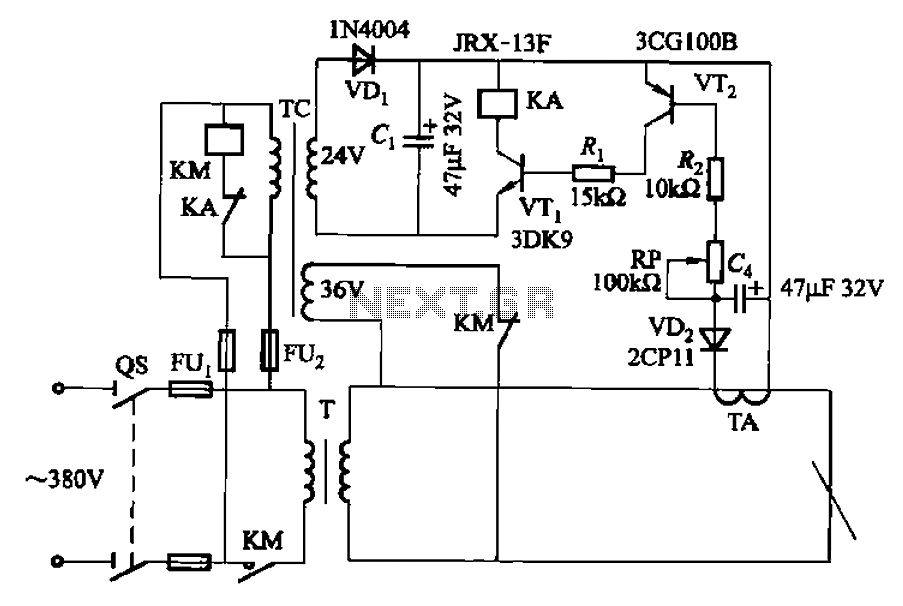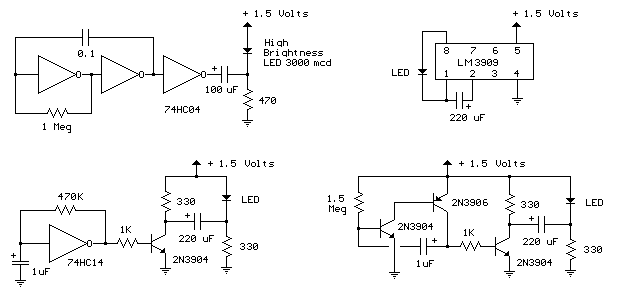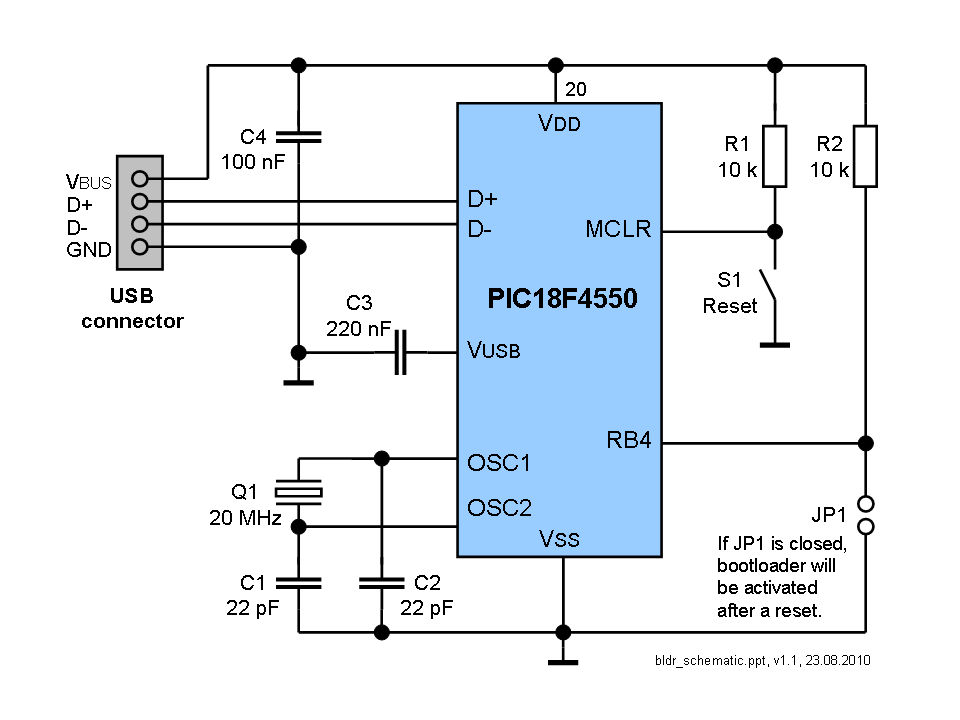
Strain Gage Load Cell for Thrust Measurement
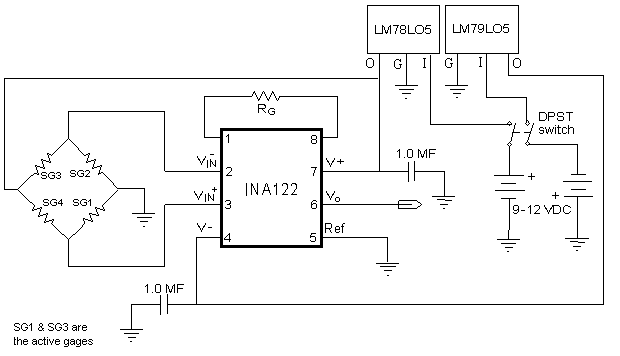
This web page presents details regarding the design of a strain gauge-based load cell that can be used in conjunction with an electronic data acquisition (DAQ) system for static thrust measurement of a rocket motor. The load cell described here is intended to be relatively simple to construct, versatile regarding load capacity, sufficiently accurate for its intended use, and inexpensive. The cost of a basic (single-gauge) load cell made by this method would typically be no more than $10-20 USD. For a more precise four-gauge load cell made by this method, the cost would be about double this amount. The fundamental premise of Amateur Experimental Rocketry is the challenge to fabricate practical components from scratch. This load cell can be beneficial as a disposable tool for static testing of new or modified designs, which inherently have a greater likelihood of catastrophic failure. With this inexpensive load cell, thrust data can be obtained on maiden firings of motors, preserving the commercial unit for proven designs. The type of load cell presented is similar to a bending beam type. When a force is applied to the load cell, the beam (or bridge) onto which the strain gauge is mounted is subjected to combined bending and axial compressive stresses, with bending stress being the dominant component. The relationship between the applied force and the combined stress in the beam is linear. The stress in the beam results in corresponding strain of the beam material and of the strain gauge, which is bonded to the surface of the beam. Strain is defined as the change in length divided by the original length. The relationship between stress and strain is linear, related by the Elastic Modulus (E) of the beam material. The electrical resistance of the strain gauge is directly proportional to the strain, resulting in an output signal from the load cell that is linearly proportional to the applied load, simplifying calibration and use of the load cell. An important feature of the load cell is that total displacement under load is minimal, which significantly reduces unwanted dynamic effects associated with mass and large displacement systems. The load cell consists of a block of metal (steel, aluminum, or brass) with a single hole drilled through it. To generate the required bending strain, a slit is cut on one side to create a bending bridge on the opposite side, to which one or more strain gauges are bonded. Two gauges mounted side-by-side provide double the output signal, enhancing sensitivity and resolution. A "full-bridge" (or Wheatstone bridge) arrangement uses a total of four gauges, with two "active" gauges measuring the strain and two "passive" gauges balancing the bridge.
The design of the strain gauge-based load cell incorporates several critical elements to ensure accurate thrust measurement in rocket motor applications. The load cell's structure is designed to minimize deflection under load, addressing issues encountered in previous designs that utilized cantilever beams. By employing a solid metal block with a strategically placed slit, the load cell effectively creates a bending beam configuration that allows for precise measurement of applied forces.
In operation, when a load is applied to the load cell, the resulting bending moment induces strain in the beam material. This strain is detected by the strain gauges, which convert mechanical deformation into an electrical signal. The use of a full-bridge configuration allows for enhanced sensitivity and noise cancellation, as the arrangement of active and passive gauges compensates for temperature variations and other external factors that could affect measurement accuracy.
Calibration of the load cell is straightforward due to the linear relationship between applied load and output signal. By applying known weights and recording the corresponding electrical output, a calibration curve can be established, enabling accurate thrust measurements during rocket motor tests. The load cell's compact design and low cost make it an accessible option for amateur rocketry enthusiasts seeking reliable thrust data without the expense of commercial load cells.
Overall, this strain gauge-based load cell design represents a practical solution for static thrust measurement in experimental rocketry, balancing performance, cost, and ease of construction. Its versatility allows it to be adapted for various thrust measurement applications, making it a valuable tool for both amateur and professional rocket testing endeavors.This web page presents details regarding the design of a strain gage based load cell that can be used, in conjunction with an electronic data acquisition (DAQ) system, for static thrust measurement of a rocket motor. The load cell described here is meant to be relatively simple to make, versatile to design with regard to load capacity, sufficientl
y accurate for its intended use, and inexpensive. The cost of a basic (single-gage) load cell made by this method would typically be no more than $10-20 USD. For a more precise four-gage loadcell made by this method, the cost would be about double this amount.
Of course, the underlying reason for constructing a load cell isn`t measured in "dollars and sense", but is part of the fundamental premise of Amateur Experimental Rocketry - the challenge to fabricate, whatever is practical, from scratch. I have made a number of loadcells using the method described here, and have utilized them extensively for thrust measurements of my motors, with excellent results.
Even for those who prefer to utilize a commercial load cell for thrust measurement, the load cell described here can be of great benefit as a "dispensible" tool for static testing of new designs (or modified designs) which inherently have a greater likelihood of catastrophic failure. With this inexpensive load cell, thrust data can be obtained on maiden firings of motors, saving the commercial unit for proven designs.
The type of load cell that is being presented is basically similar to a bending beam type. When a force is applied to the load cell, the beam (or bridge) onto which the strain gage is mounted, is subjected to combined bending and axial compressive stresses. The bending stress is by far the dominant component, hence the term "bending beam". Importantly, the relationship between the applied force and the combined stress in the beam is linear.
The stress in the beam results in corresponding strain of the beam material, and also of the strain gage (which is bonded to the surface of the beam). Strain is defined as change in length divided by the original length. The relationship between stress and strain is linear, related by the Elastic Modulus (E) of the beam material.
The electrical resistance of the strain gage is directly proportional to the strain, with the net result being that the output signal from the load cell is linearly, or directly, proportional to the applied load, simplifying calibration and use of the load cell. An important feature of the load cell is that total displacement under load is very small. This is significant, as it nearly eliminates unwanted dynamic effects associated with mass and large displacement (e.
g. spring) systems. When I originally came up with the idea of making a load cell, I wanted to simplify the construction as much as possible, while meeting certain criteria. For one thing, a compression load cell is most appropriate for thrust measurement, . Another criterion was to minimize displacement under load, as I had had a problem with my earlier Static Test Rig which had utilized a strain gage mounted on a cantilever beam.
The deflection for that system was significant enough under loading such that it proved to be necessary to add a hydraulic damper to eliminate oscillations. What eventually evolved was the concept shown in Figure 1. The load cell consists of a block of metal (steel, alumininum or brass) with a single hole drilled through it.
To generate the required bending strain, a slit is cut on one side to create a bending bridge on the opposite side, to which one or more strain gages are bonded. Two gages mounted side-by-side provide double the output signal (and thus double the sensitivity and resolution) of a single gage.
A "full-bridge" (or Wheatstone bridge) arrangement uses a total of 4 gages, of which 2 "active" gages measure the strain, and 2 "passive" gages, which serve to balance the bridge. This full-bridg 🔗 External reference
The design of the strain gauge-based load cell incorporates several critical elements to ensure accurate thrust measurement in rocket motor applications. The load cell's structure is designed to minimize deflection under load, addressing issues encountered in previous designs that utilized cantilever beams. By employing a solid metal block with a strategically placed slit, the load cell effectively creates a bending beam configuration that allows for precise measurement of applied forces.
In operation, when a load is applied to the load cell, the resulting bending moment induces strain in the beam material. This strain is detected by the strain gauges, which convert mechanical deformation into an electrical signal. The use of a full-bridge configuration allows for enhanced sensitivity and noise cancellation, as the arrangement of active and passive gauges compensates for temperature variations and other external factors that could affect measurement accuracy.
Calibration of the load cell is straightforward due to the linear relationship between applied load and output signal. By applying known weights and recording the corresponding electrical output, a calibration curve can be established, enabling accurate thrust measurements during rocket motor tests. The load cell's compact design and low cost make it an accessible option for amateur rocketry enthusiasts seeking reliable thrust data without the expense of commercial load cells.
Overall, this strain gauge-based load cell design represents a practical solution for static thrust measurement in experimental rocketry, balancing performance, cost, and ease of construction. Its versatility allows it to be adapted for various thrust measurement applications, making it a valuable tool for both amateur and professional rocket testing endeavors.This web page presents details regarding the design of a strain gage based load cell that can be used, in conjunction with an electronic data acquisition (DAQ) system, for static thrust measurement of a rocket motor. The load cell described here is meant to be relatively simple to make, versatile to design with regard to load capacity, sufficientl
y accurate for its intended use, and inexpensive. The cost of a basic (single-gage) load cell made by this method would typically be no more than $10-20 USD. For a more precise four-gage loadcell made by this method, the cost would be about double this amount.
Of course, the underlying reason for constructing a load cell isn`t measured in "dollars and sense", but is part of the fundamental premise of Amateur Experimental Rocketry - the challenge to fabricate, whatever is practical, from scratch. I have made a number of loadcells using the method described here, and have utilized them extensively for thrust measurements of my motors, with excellent results.
Even for those who prefer to utilize a commercial load cell for thrust measurement, the load cell described here can be of great benefit as a "dispensible" tool for static testing of new designs (or modified designs) which inherently have a greater likelihood of catastrophic failure. With this inexpensive load cell, thrust data can be obtained on maiden firings of motors, saving the commercial unit for proven designs.
The type of load cell that is being presented is basically similar to a bending beam type. When a force is applied to the load cell, the beam (or bridge) onto which the strain gage is mounted, is subjected to combined bending and axial compressive stresses. The bending stress is by far the dominant component, hence the term "bending beam". Importantly, the relationship between the applied force and the combined stress in the beam is linear.
The stress in the beam results in corresponding strain of the beam material, and also of the strain gage (which is bonded to the surface of the beam). Strain is defined as change in length divided by the original length. The relationship between stress and strain is linear, related by the Elastic Modulus (E) of the beam material.
The electrical resistance of the strain gage is directly proportional to the strain, with the net result being that the output signal from the load cell is linearly, or directly, proportional to the applied load, simplifying calibration and use of the load cell. An important feature of the load cell is that total displacement under load is very small. This is significant, as it nearly eliminates unwanted dynamic effects associated with mass and large displacement (e.
g. spring) systems. When I originally came up with the idea of making a load cell, I wanted to simplify the construction as much as possible, while meeting certain criteria. For one thing, a compression load cell is most appropriate for thrust measurement, . Another criterion was to minimize displacement under load, as I had had a problem with my earlier Static Test Rig which had utilized a strain gage mounted on a cantilever beam.
The deflection for that system was significant enough under loading such that it proved to be necessary to add a hydraulic damper to eliminate oscillations. What eventually evolved was the concept shown in Figure 1. The load cell consists of a block of metal (steel, alumininum or brass) with a single hole drilled through it.
To generate the required bending strain, a slit is cut on one side to create a bending bridge on the opposite side, to which one or more strain gages are bonded. Two gages mounted side-by-side provide double the output signal (and thus double the sensitivity and resolution) of a single gage.
A "full-bridge" (or Wheatstone bridge) arrangement uses a total of 4 gages, of which 2 "active" gages measure the strain, and 2 "passive" gages, which serve to balance the bridge. This full-bridg 🔗 External reference
